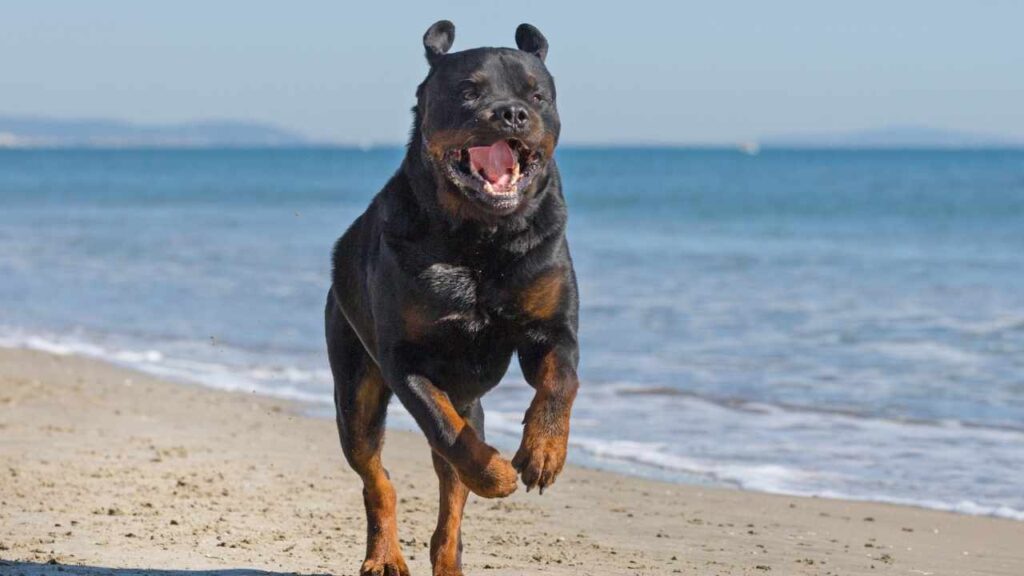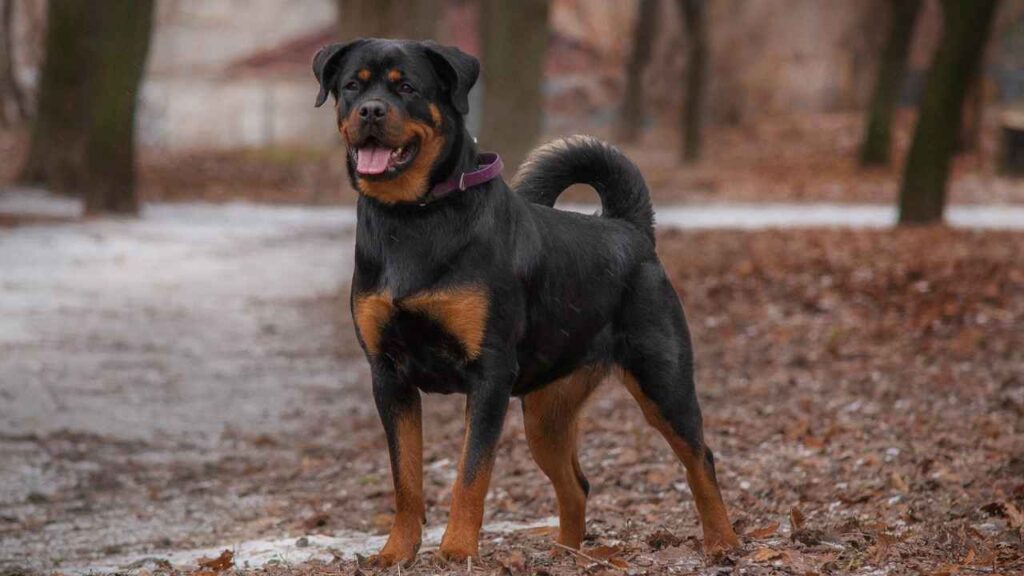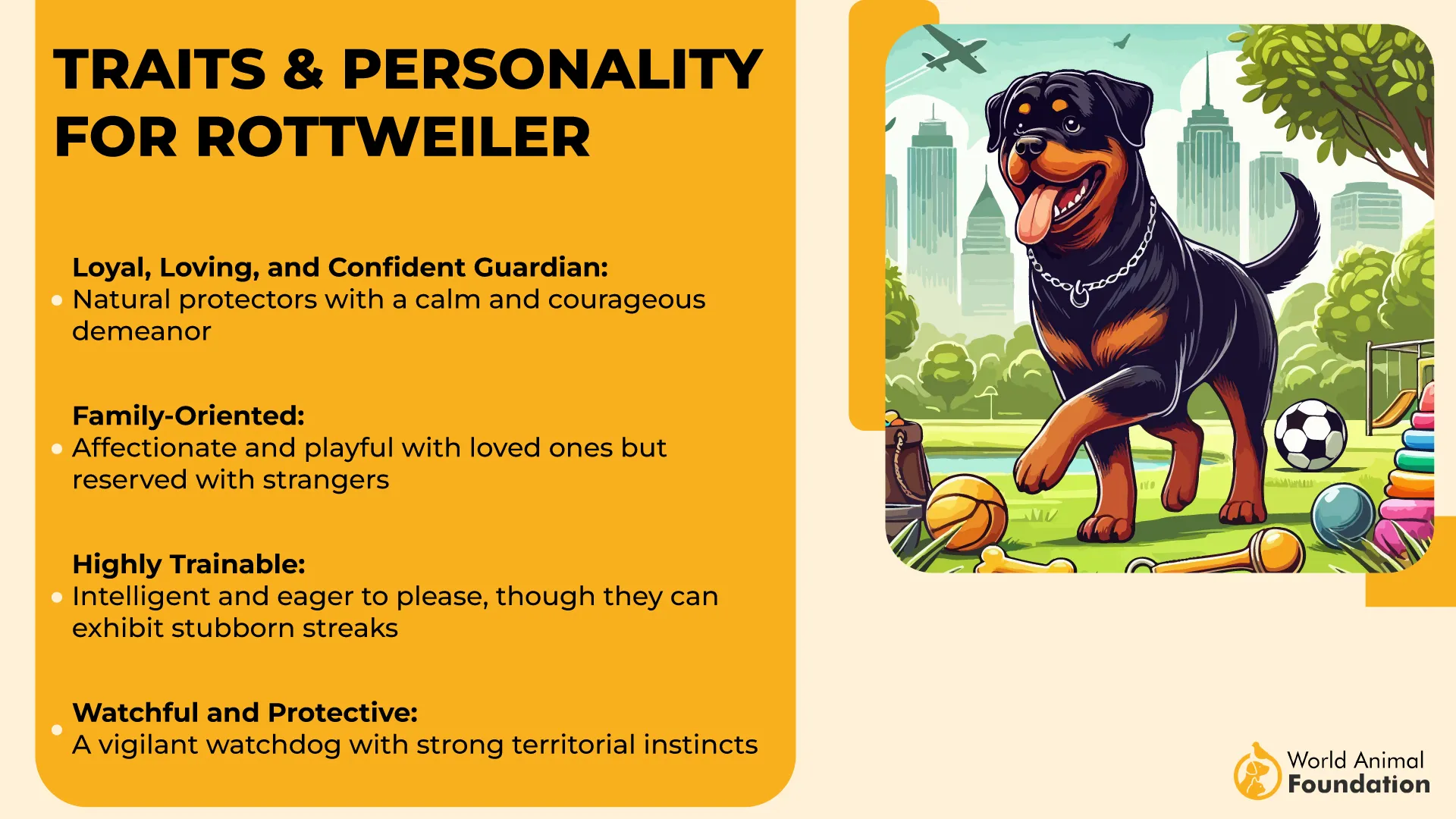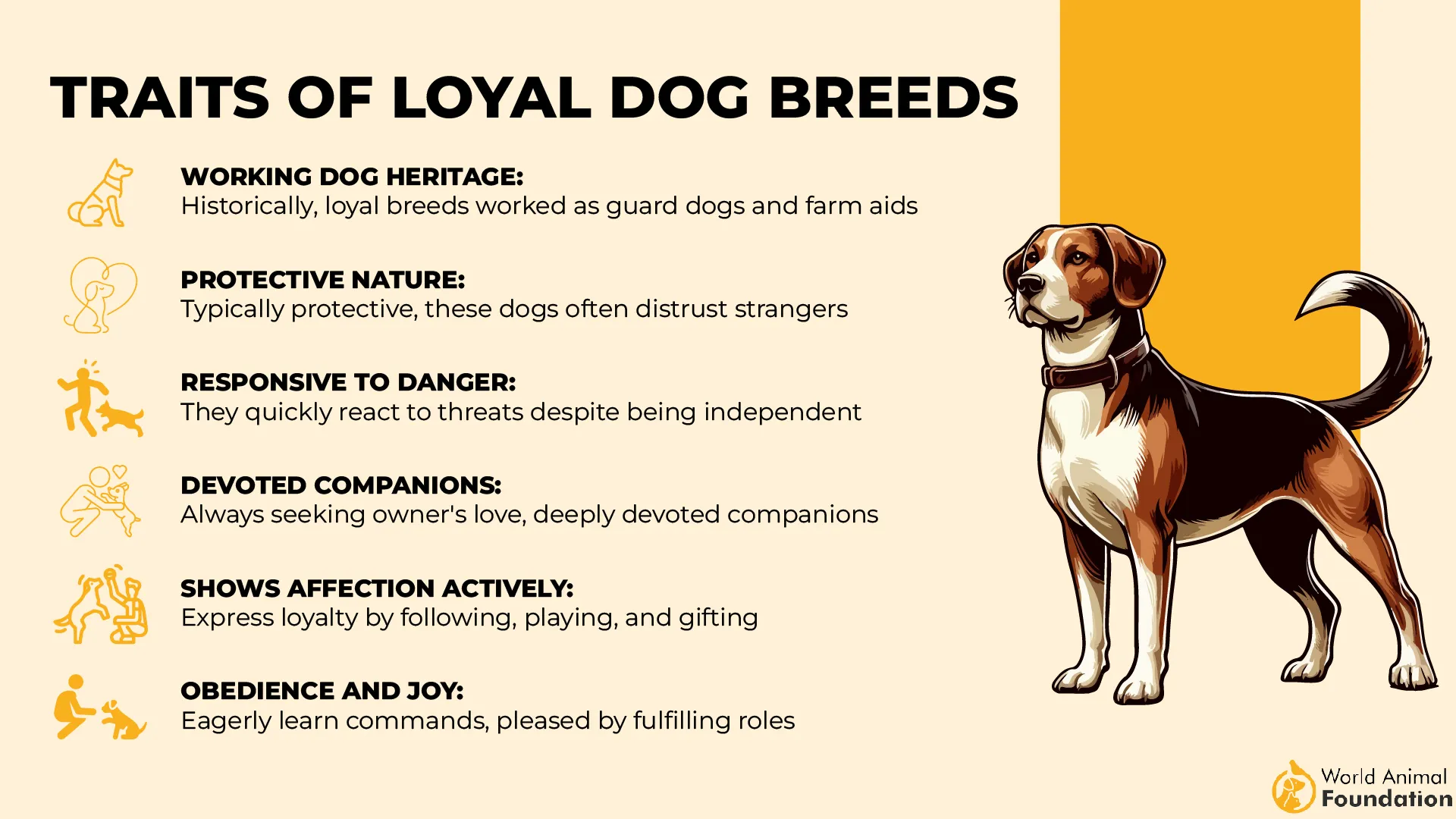Every country has its own dog breeds, but no other dog breed is more universally loved than the Rottweiler. The American Kennel Club describes Rottweilers as loyal, loving, and confident guardians. Most Rottweilers are known for their calmness and protective instincts.
Most people think of Rottweilers as aggressive dogs, but Germans have a completely different image of a Rottie. Every Rottweiler bred in Germany should be friendly, calm, and great with children.
Though there is truly one Rottweiler breed, Rotties bred in different countries vary a bit. German Rottweilers are different from their American counterparts, whereas Roman and Serbian Rottweiler dogs look and act differently.
Having a look at different types of Rotties and their characteristics will give you a better understanding of different variants of this breed.
Here are the four different types of Rottweiler dogs.
4 Types of Rottweiler
1. German Rottweiler

The original version of this breed, German Rottweilers’ history dates back to the Roman Empire. They were initially used as herding dogs. The American Kennel Club did not recognize the Rottweiler until 1931, even though modern Rottweilers first appeared in German stud books in 1901.
In Germany, Allgemeiner Deutscher Rottweiler Klub (ADRK) is the prevailing authority on this breed and sets a strict breed standard for Rottweilers. A Rottweiler cannot be registered in Germany until both parents pass the breed suitability test.
Temperament
The dog’s temperament is important to ADRK standards. The ADRK emphasizes that Rotties are placid and good-natured dogs. They get along well with children. In Germany, they make good family dogs, so they should be calm and intelligent. They should do well as security dogs, police dogs, and guide dogs for the blind.
Height and Weight
Males stand 25 to 27 inches tall at the shoulder and weigh around 110 to 130 pounds. Females are a bit smaller. They have a height of 22 to 25 inches and can weigh 77-110 pounds.
Appearance
The German Rottweilers are characterized by their long tails and folded ears. Tail docking and ear cropping have been banned in Germany since 1999.
German Rottweilers have blockier heads and more imposing, bulkier frames. These robust dogs with sturdy bodies are supposed to pass the ZTP (Zuchttauglichkeitsprüfung) breed suitability test that looks at various qualities, including:
Physical conformation
Bite work (protecting the handler)
Reaction to gunshots
Stability around others
2. American Rottweiler

Technically born in America, the American Rottweilers are the descendants of the German Rottweilers. While they are the same breed, they do have some differences, mainly in their size and weight. The American Kennel Club’s breed standards do not vary much from the ADRK.
The AKC classifies them as working dogs, used for search-and-rescue missions and police work. Both German and American Rottweilers are virtually identical. The differences in their personalities and physique are the result of stricter breed standards on the German side.
Temperament
The American Rottweilers are known for their loyal, loving, and protective nature. According to the AKC requirements, Rotties should be brave but calm. Their aloof and aggressive response towards other breeds is not fault-worthy.

American Rottweilers may act to protect their families, but do not initiate a fight. In some circles, American Rotties are known to be relatively shyer, less confident, and less motivated toward work. Some also think that they lack German Rottie’s attitude; rather, they have an elegant personality.
They are loyal and affectionate to their humans and children, but standoffish towards strangers. That is why they make one of the best guard dogs.

Height and Weight
The American Rottweilers are also large, powerful, and muscular dogs, as described by the American Rottweiler Club. However, they are slightly smaller in size. Males stand 24 to 27 inches tall and weigh around 95 to 135 pounds, whereas females are 22-25 inches tall and weigh up to 80-100 pounds.
Appearance
The American Kennel Club does not ban tail docking. Their breed requirements notably differ from the ADRK standards in one area: the belly tuck. The AKC calls for a slight tuck up, but the ADRK emphasizes that the flank should not have a tuck.
Minor differences apart, the American Rotties have almost similar physical breed standards as their German counterparts. However, the American Rottweiler’s frame is slightly more defined. They have shorter, slimmer, and overall lighter bodies.
They have finer bone structures, tinier heads, and narrower snouts. In a nutshell, the American Rotties do not have a stature as imposing as the German ones, but they still meet the standard Rottweiler appearance standard.
American Rotties can still have a “German” appearance if their tail is intact.
3. Roman Rottweiler
Roman Rottweilers appear to be a throwback to centuries-old Roman drover dogs. They are the ‘old school’ version of Rottweilers. They are also called Colossal or Gladiator Rottweilers. The name “Roman” is misleading because they originated in Germany, probably due to bad breeding.
The breeders created Roman Rotties because they wanted a larger and heavier dog. Their size became detrimental to health as they became vulnerable to diseases like hip dysplasia, overheating, and snoring. Due to this, the AKC does not recognize Roman Rottweilers.
Height and Weight
Roman Rottweilers are the largest Rottweiler variant, with males having a height of 25 to 30 inches and weighing up to 120 pounds. Females stand around 24 to 29 inches tall at the shoulder and can weigh up to 80 pounds.
Appearance
Roman legions obtained this variant through a cross between Mastiffs and Rottweilers. That is why they have a more mastiff-like appearance. The Roman Rottweiler’s head is slightly bulkier, its body is heavier, and its legs are longer.
Many believe that the term “Roman Rottweiler” is a marketing gimmick for breeders developing giant versions of the classic German dog. Some also say that the Roman variant of the breed does not exist now.
4. Serbian Rottweiler
This new Rottweiler variety was first popularized in Eastern European countries. Now it has become famous worldwide. Serbian Rotties are very similar to the other Rottweiler variants. Do you know what sets them apart? It’s their size!
Height and Weight
Serbian Rottweilers are large dogs that can weigh up to 159 pounds. They tend to be stockier and frequently poorly bred to have great features.
Appearance
Serbian Rottweilers have a broader appearance. They have short muzzles and tend to have a brachycephalic look, which is desirable for some pet owners. However, they are prone to respiratory issues due to brachycephaly. As a result, their quality of life is affected.
These shorter snouts are against the AKC breed standard, which says that a muzzle shorter than 40% of the length of the head is too short. In the case of Serbian Rottweilers, appearance is the main focus, which seems to be unethical. However, money is the main concern for unscrupulous breeders.
Conclusion
American, German, Roman, and Serbian Rottweilers are the different variants of the same breed. They have slight differences in their size, appearance, and origin. While German and American Rottweilers are more inclined towards originality, Serbian and Roman Rotties are most often the result of poor breeding. So, if you want to adopt a healthier Rottweiler variant, we would recommend going for a German or American Rottweiler!


